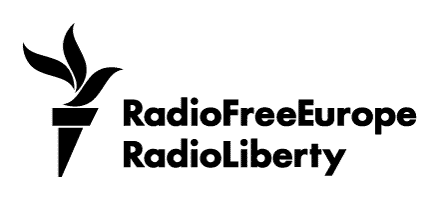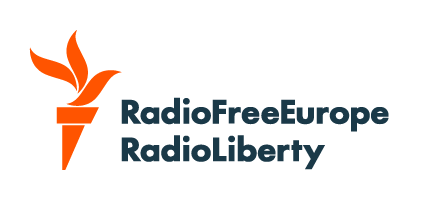When US President Donald Trump and Russian President Vladimir Putin sit down in Alaska on August 15 to discuss ending the war in Ukraine, they will meet in a place that is at once a point of cooperation, rivalry, and deep symbolism.
In announcing the summit's location, Trump said his talks with Putin would focus on resolving the 45-month-old conflict -- the largest in Europe since the end of World War II -- through a compromise between Ukraine and Russia on territory.
"We're going to get some [land] back, and we're going to get some switched," Trump told reporters at the White House on August 8. "There'll be some swapping of territories to the betterment of both," he added.
Halfway Between Moscow Or Washington
To Bill Courtney, a former US diplomat who participated in Cold War arms talks, geography is the main appeal for choosing Alaska. The state is roughly equidistant between Washington and Moscow, a logistical convenience once sought -- but rarely found -- in US-Soviet summits, he said.
"Alaska actually offers you an opportunity to have something that looks like it's about halfway between Moscow or Washington," Courtney told RFE/RL. "Putin and Trump are making trips that are roughly comparable."
For Putin, the summit's location signals a subtle but significant win, according to Matthew Schmidt, a professor of homeland security and international affairs at the University of New Haven. The Russian media, Schmidt said, has praised the choice of holding the summit in a place that was once Russian territory until it was sold to the United States in 1867 for $7.2 million.
Alaska symbolizes the ease with which powers can trade territory, ignoring those who live there, Schmidt said.
Easier To Police
Security is another important draw, according to Troy Bouffard, professor of Arctic security at the University of Alaska Fairbanks. Alaska ranks 48 out of the 50 US states in population size with about 730,000 residents. That means fewer security headaches than most places in the continental United States.
Anchorage, the state's largest city with 250,000 residents and a possible location for the summit, has top-notch logistics, he said. It is also buttressed by Joint Base Elmendorf-Richardson, which hosts thousands of active US air force and army personnel.
"It's not difficult at all to lock down routes and streets and buildings in Anchorage," Bouffard said.
Putin is deeply unpopular in the United States with a Pew Research Poll published in June showing that 84 percent of Americans have little to no confidence in the Kremlin leader to do the right thing in world affairs.
But holding the summit in a third country is complicated by the International Criminal Court's (ICC) indictment of Putin on war crimes. ICC members states -- of which there are 125 -- are required to arrest Putin should he set foot on their territory. The United States is not a signatory to the ICC.
The optics of Putin in the United States "are going to be bad, but they would be really, really bad if they tried to do this in [Washington] D.C.," Bouffard said.
Tens of millions of Americans live within several hours drive of the US capital, enabling those opposed to Putin and his war in Ukraine to easily organize large-scale demonstrations in Washington against such a visit.
To get to Alaska from the closest continental states, US citizens have to traverse thousands of miles through Canada. Domestic flights to Alaska are among the most expensive in the United States. With just a week's notice, finding available plane tickets will be difficult.
Bouffard said there is talk of protesters nonetheless gathering along roads in Anchorage with Ukrainian flags or posters with the colors of the Ukrainian flag. Courtney said he expects Putin to be "wrapped in a cocoon" to avoid any sight of protests.
From Cooperation To Confrontation
Alaska has always held a significant place in the relationship between the US and Russia. During World War II, Alaska was a vital link in the Lend-Lease program. Soviet pilots picked up US-made aircraft in Alaska and flew them across the Bering Strait to Russia. Nearly 8,000 planes took the route from Nome, a port city in western Alaska,to the Russian front.
That cooperation gave way to confrontation after 1945. During the Cold War, Alaska was militarized as a bulwark against Moscow, with bases hosting interceptors and radar sites to guard the polar approaches. Today, it remains home to America's largest fleet of advanced fighter jets and is a cornerstone of its missile defense network.
The old tensions are returning as great power competition in the resource-rich Arctic region heats up, driven by receding ice and the opening of transportation routes. In 2021, a senior Alaskan commander said US intercepts of Russian aircraft near or inside the Alaska Air Defense Identification Zone had reached a post-Soviet high.
Russian bombers and reconnaissance planes still probe the boundary regularly, the most recent such incursion taking place on July 22, the fifth this year. Some US officials are now pushing to reestablish Cold War military facilities on Alaska's Aleutian Islands chain to counter a growing Russian and Chinese military presence.
In his potential effort to win over Trump, Putin may focus on Alaska as a location binding Russia and the United States together. Yury Ushakov, a senior Kremlin foreign policy adviser, called Alaska a "symbolic location" that reflects the two countries' shared Arctic frontier.
"Russia and the United States are close neighbors, bordering each other," Ushakov said in a video statement. Regardless of whether or not the summit yields real progress on peace, for Alaska, it will be a rare moment in the global spotlight.














